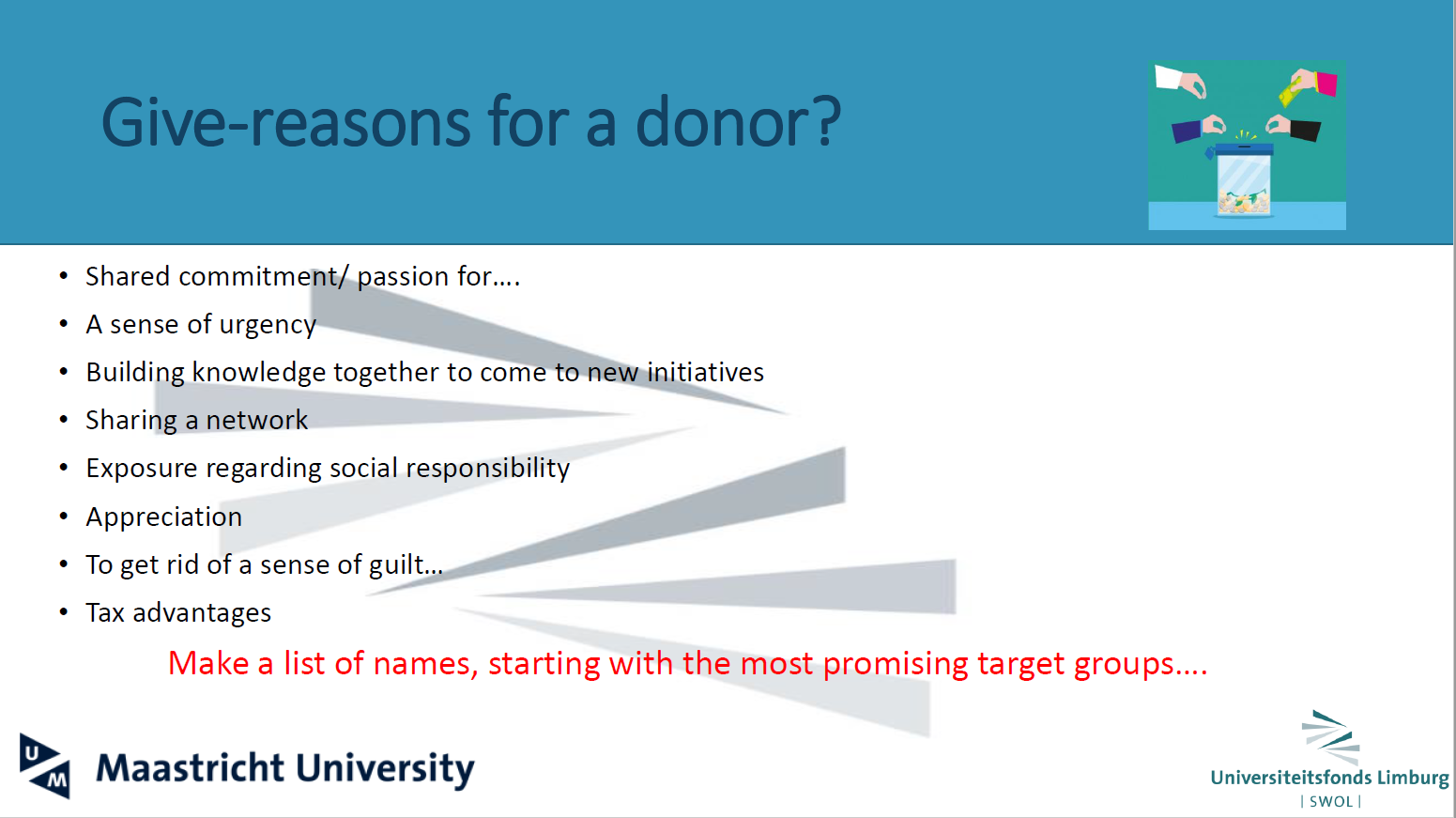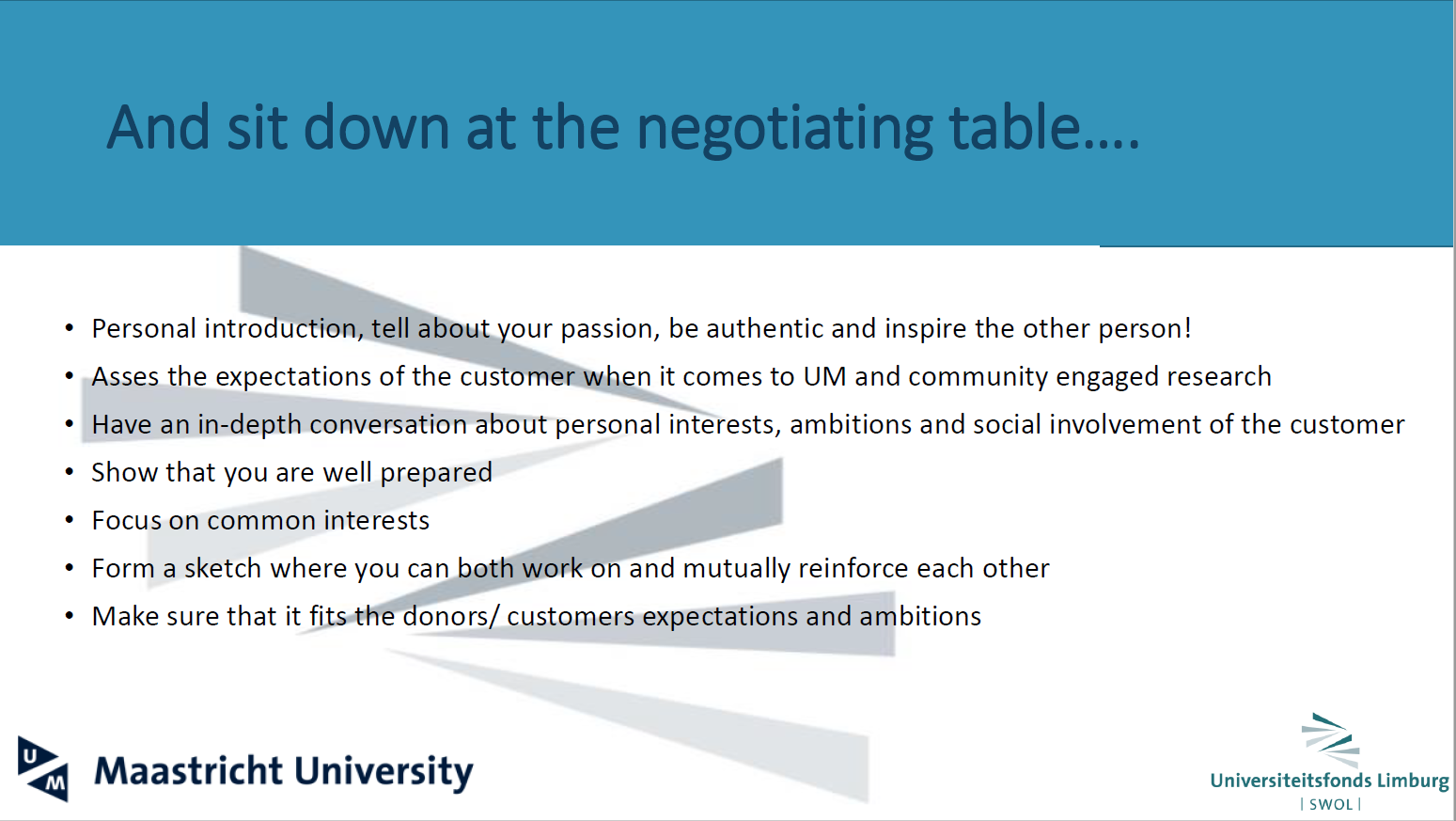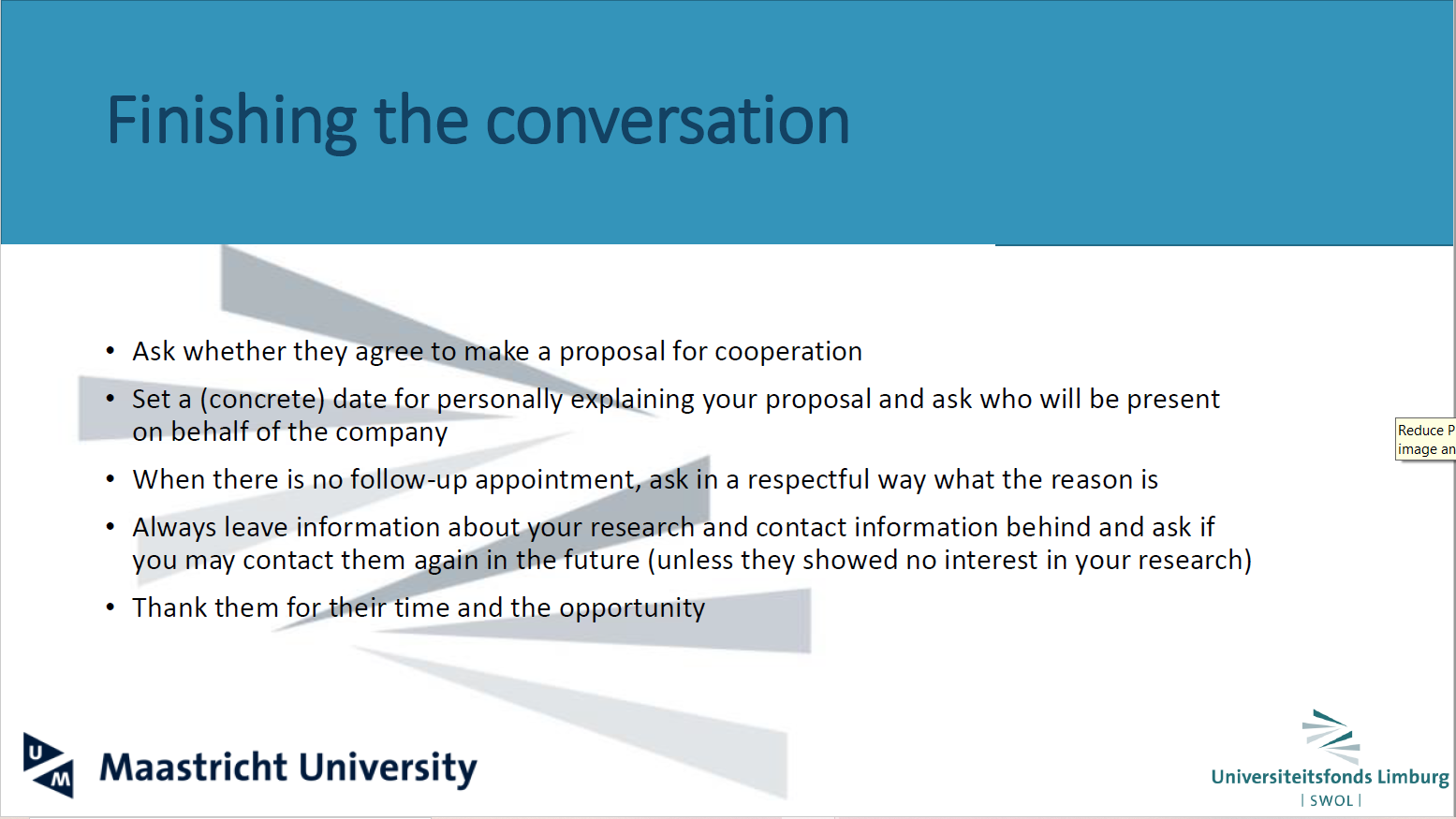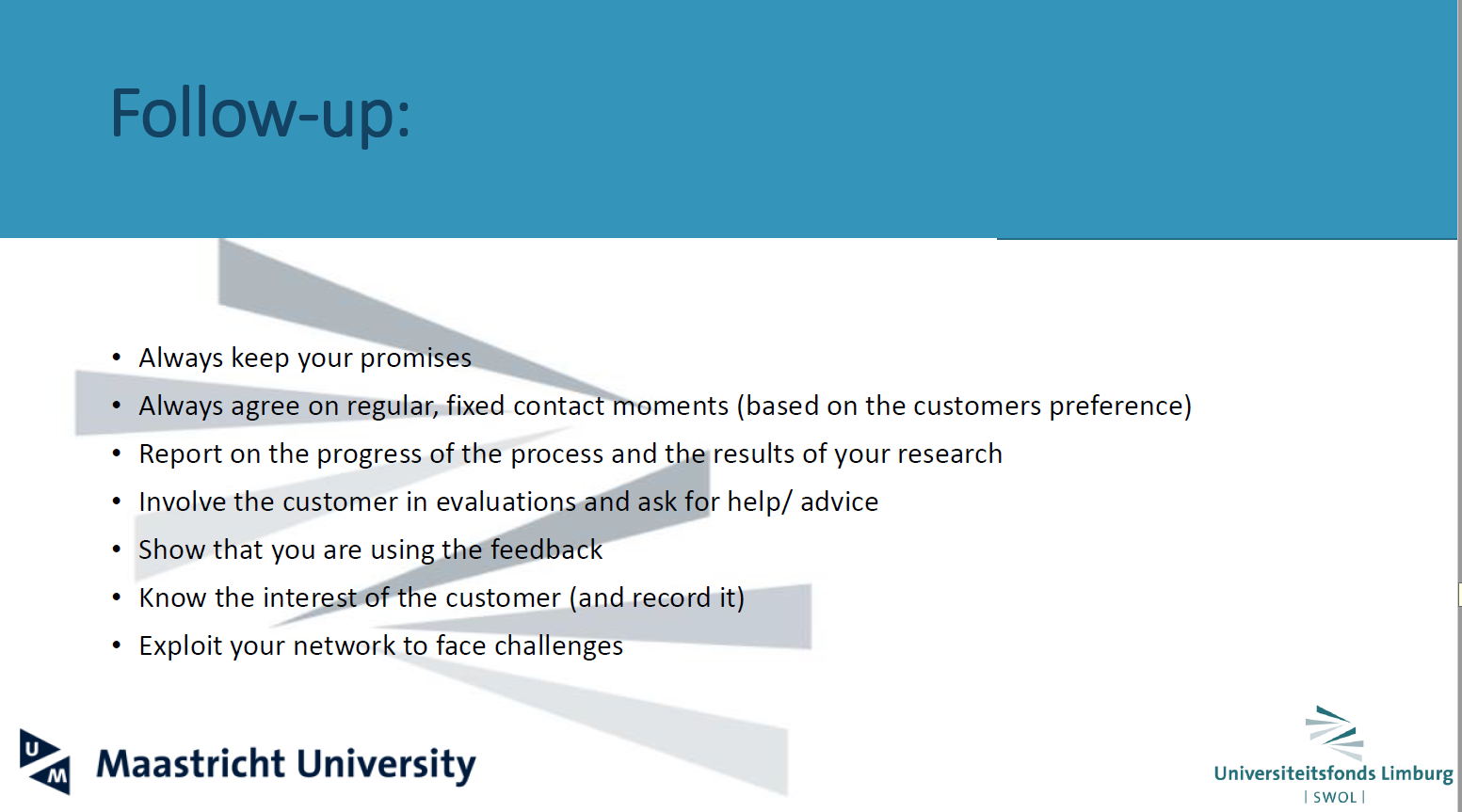Lessons learned: “Commercial communication and relation management''
− 0 min readMPCER workshop 14 January 2021, by Bouwien Janssen (director SWOL/University Fund Limburg)
You are obviously interested in community-engaged research. Maybe you already have a new research design in mind. But... what if you lack the financial resources for your project?
Asking individuals and companies to donate to your research can be an alternative way for funding. Whom do you target? What is the best way to approach them? And which (preparation) steps are important
-
Step 1: The why
According to Bouwien Janssens, there are several steps you can take to ask potential donors for money, but it all starts with THE WHY. Why is your research necessary? If this is not clear for you, it is also not clear for others. On the other hand, if this is clear for you and you are passionate and show perseverance, this is inspiring to whomever is listening. You have to know what you want, and what you need to make your dream come true.
-
Step 2: Whom to target?
The target group of your research is the easiest place to start. Those who will benefit from your research, may be interested in donating. You have to think about why a donor would want to donate. Janssens gives some reasons.To figure out whom to target, you can either make a list of names, or start with the most promising target groups. An example of what such a list could look like.
-


-
Step 3: Prepare!
Before getting in touch with a potential donor, you need to prepare thoroughly. It is much like diving: you need a whole day to prepare, for a 30min dive. Otherwise you don’t see anything under water. But if you are relaxed because you are well prepared, the fish will come to you. Not when you are moving around nervously.
So make sure that you know your potential donor well, and that you know why they might be interested to support you. Some things you could look into when preparing to approach a company:
- Mission, vision, view, strategy, main goal
- Trends and figures
- Future plans: their wishes about innovation, techniques, personnel
- Information about the owner/executives, to be able to build a more personal connection, and decide who to talk to
To find information, explore the company’s website and social media, and gather information through LinkedIn. Do you maybe know someone who’s connected to this company?
Step 4: A first contact (call)
After you have prepared well, you can start with a telephone call. It is better do use the phone than email, since email is easily deleted and an email usually doesn’t convey your passion. You call and try to motivate the person you talk to, to schedule a meeting with you. How?
That’s very difficult, but again, it comes down to whether you can inspire the person to listen to you? It is at this stage a balance between not giving too much detailed information, but sharing your passion and showing why meeting with you would make your donor happy. Your goal of this call is to get them to sit with you at the table.
Practically: think about the right timing. Don’t call Friday after 17.00h, but call in the morning, when people are starting their workday.
Step 5: At the negotiation table
Once you are at the negotiation table, the most important is that you want people to emotionally connect to your research. In the end, it is all about the why: your dream. In addition, you absolutely need to know the needs of the donor.
How should you behave? Janssen shares some practical tips:
- Put yourself in the shoes of the different parties
- Listen, pay attention
- Be friendly and serving
- Take the personality of the donor into account. Don’t talk too much to an introvert person. You will end up with no information about the company nor its director. Aim for a dialogue, focus on the donor’s needs. Dare to ask questions.
Step 6: Finishing the conversation
Make sure that you keep track of time, don’t talk too much in the end so that there is time for finishing the conversation in a good way. This is the moment when you have to be concrete and discuss future cooperation.
Step 7: Follow up
Whether or not you have reached an agreement to collaborate, ALWAYS follow up after a meeting. Make sure donor always receives written wrap-up of your conversation. Even if there is no interest in your research at the moment, it could be the case in the future. Or they could share your story/research with another company in the future. Your time horizon has to be more than one year.
-


-
If, after reading this report, you feel ready to start engaging with donors and you would like help in this process, you can contact SWOL/University Fund Limburg for support: info@ufl-swol.nl.
